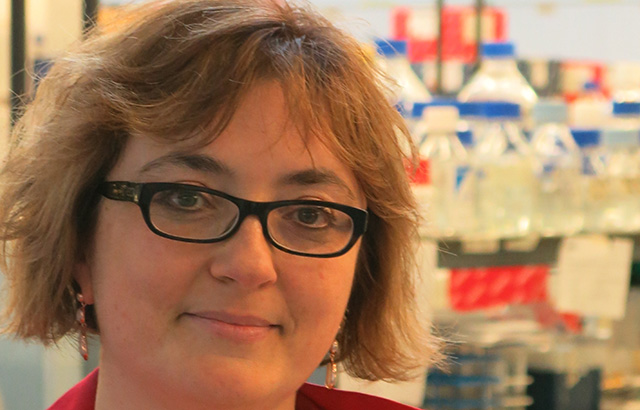Changes in neuroglial cells contribute to immune evasion and tumour growth in most common malignant brain tumour in adults
A new paper by a researchers from the Brain Tumour Research Centre of Excellence, part of the Centre for Genomics and Child Health at the Blizard Institute, published in The EMBO Journal, finds that reactions in the microglia triggered by Glioblastoma multiforme hinders effective T‐cell infiltration, proliferation and immune reactivity, thereby contributing to tumour immune evasion and promoting tumour growth.

Lead author Professor Silvia Marino, Director of the Brain Tumour Research Centre of Excellence
Neuroglia, or glial cells, are the most abundant cells in the nervous system. They provide support and nutrition, and regulate the internal environment of the brain. Microglia are a type of neuroglia located throughout the brain and spinal cord. They are scavenger cells responsible for detecting, engulfing and destroying pathogens, and act as one of the main forms of active immune defence in the central nervous system.
Glioblastoma multiforme (GBM) is the most common malignant brain tumour in adulthood. In this study, the researchers show that GBM-initiating cells trigger a reaction in the microglia that hinders effective T‐cell infiltration, proliferation and immune reactivity, thereby contributing to tumour immune evasion and promoting tumour growth. A group of molecules, known as the mTOR pathway, play a crucial role in this.
Targeting the mTOR pathway in microglia could be a way to turn these molecules back on to doing what they should be doing and halt tumour progression. The team at Queen Mary will now be further examining the mechanisms involved, looking at how to target the pathway that the GBM cells interfere with, in pre-clinical models, which if successful would pave the way for future clinical trials.
Professor Silvia Marino, the report lead author, says this shift of focus from the tumour to its microenvironment, and the possibilities it could offer, is "realistically exciting".
More information
- Research paper: Anaelle A Dumas, Nicola Pomella, Gabriel Rosser, Loredana Guglielmi, Claire Vinel, Thomas O Millner, Jeremy Rees, Natasha Aley, Denise Sheer, Jun Wei, Anantha Marisetty, Amy B Heimberger, Robert L Bowman, Sebastian Brandner, Johanna A Joyce, Silvia Marino. 'Microglia promote glioblastoma via mTOR‐mediated immunosuppression of the tumour microenvironment'. EMBO J (2020) e103790. DOI: https://doi.org/10.15252/embj.2019103790.
- Find out more about the Stem Cell, Regeneration and Cancer research group (and Brain Tumour Research Centre of Excellence) at the Blizard Institute.
- Find out more about the Centre for Genomics and Child Health at the Blizard Institute
- Find out more about Barts and The London School of Medicine and Dentistry, Queen Mary University of London.